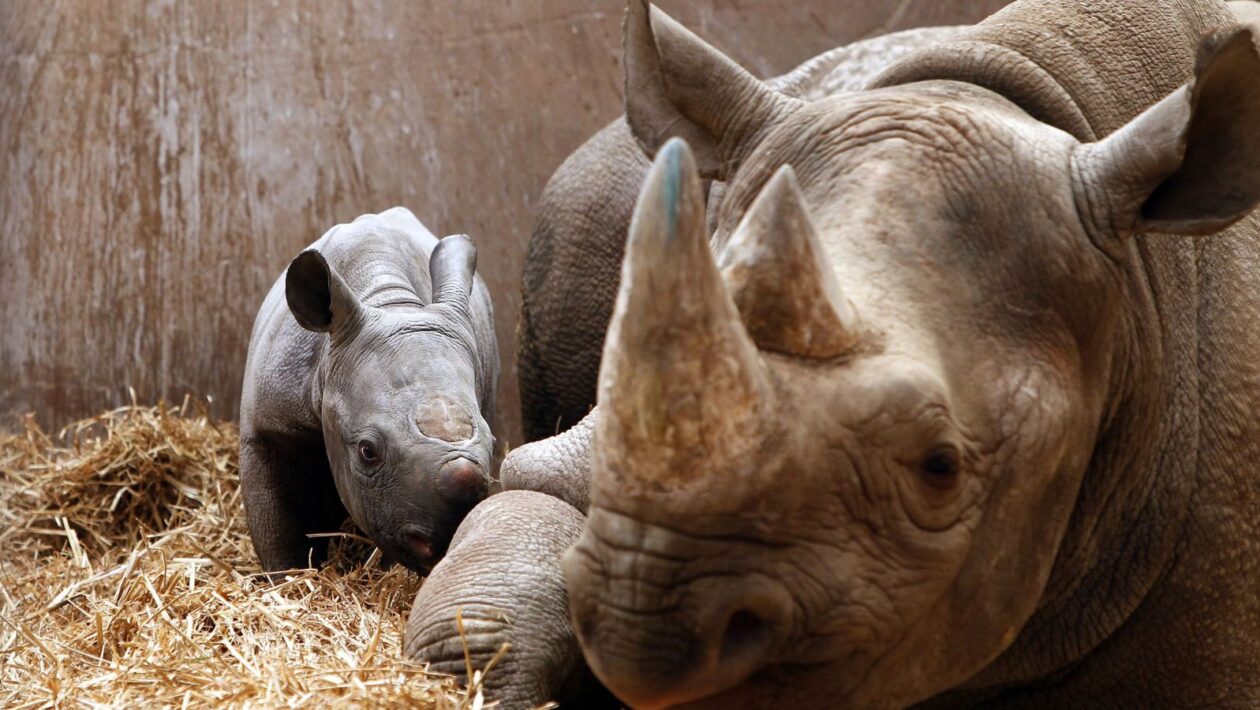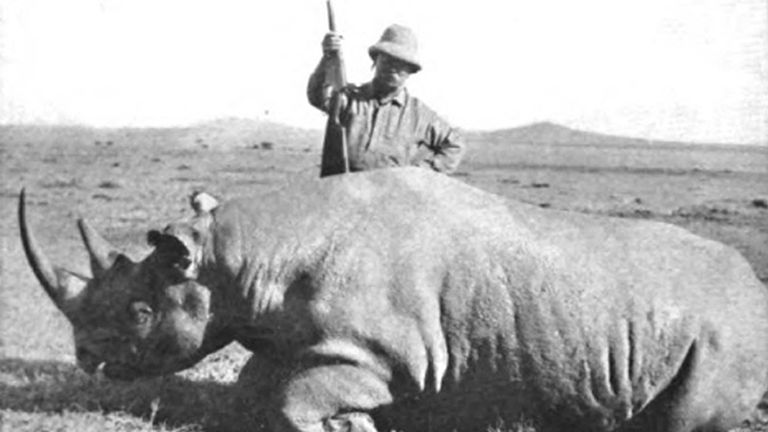[ad_1]
Rhinoceros horns, across all species, have steadily shrunk over the past century and scientists believe it may be due to hunting.
The research, published in the journal People And Nature, is based on analysis of numerous photos of the animals collected over the last 140 years.
Rhino horns are often trophy hunted or used in medicines in China and Vietnam, according to experts from the University of Cambridge.
After years of rhinos with the longest horns being hunted, researchers believe that those with smaller horns have been more likely to survive to pass on their genes to future generations.
Oscar Wilson, lead author of the report and a former researcher with the University of Cambridge’s zoology department, said: “We were really excited that we could find evidence from photographs that rhino horns have become shorter over time.
“They’re probably one of the hardest things to work on in natural history because of the security concerns.”
Mr Wilson, who is now based at the University of Helsinki in Finland, added: “Rhinos evolved their horns for a reason – different species use them in different ways such as helping to grasp food or to defend against predators – so we think that having smaller horns will be detrimental to their survival.”
The researchers measured the horns of 80 rhinos photographed between 1886 and 2018, including all five species (white, black, Indian, Javan and Sumatran) found in the online archive of The Rhino Resource centre.
They closely examined images of rhinos shot dead by hunters, including one showing former US President Theodore Roosevelt standing over a black rhino he had just killed in 1911.
The researchers also compared the length of the horn in proportion to the rhino’s body.
The scientists even inspected artwork and drawings accumulated over a span of 500 years. They found that until the 1950s, there was little interest in conservation of the species.
“For at least a few decades now there’s been much more of a focus on the conservation of rhinos – and this is reflected in the more recent images, which relate to their conservation in sanctuaries or their plight in the wild,” Mr Wilson said.
The Rhinoceros is an endangered species with fewer than 30,000 living in the wild today – a stark difference to the over 500,000 that were alive at the start of the 20th century.
Black, Javan and Sumatran rhinos are classified as critically endangered.
[ad_2]




